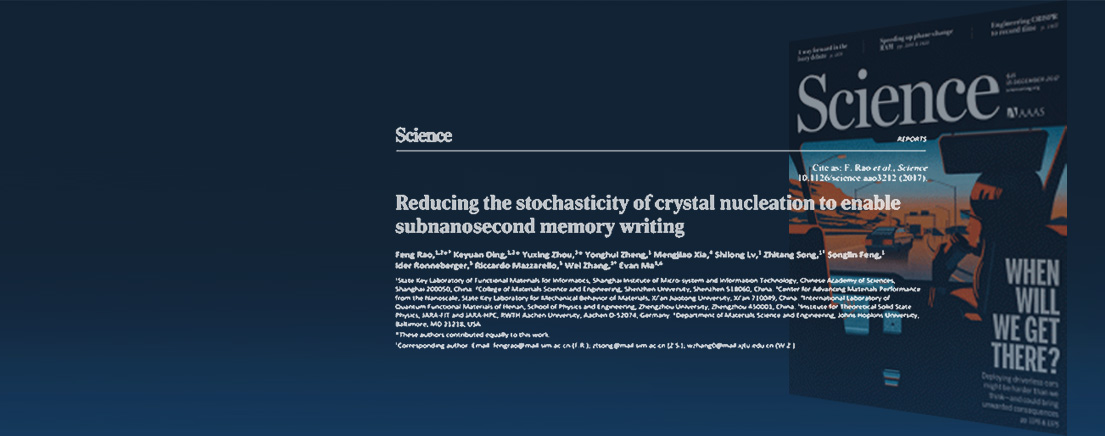Science publishes research of novel high speed and low power Sc-Sb-Te phase change storage material of SIMIT
Date:15-11-2017 | 【Print】 【close】
Non-volatile phase-change random-access memory (PCRAM) is regarded as a leading candidate for next-generation electronic memory hierarchy. It utilizes the pronounced electrical resistance difference between the amorphous and crystalline states of chalcogenide phase change materials (PCMs) to encode digital information. Fast and reversible phase transitions between the two states at elevated temperatures and good thermal stability at room temperature make PCRAM one of the most promising candidates to compete with dynamic random access memory (DRAM) and Flash memory. However, to achieve “universal memory” with PCRAM, sub-nanosecond operation is needed to compete with cache-type static random-access memory (SRAM). However, commercialized PCRAM products are limited by the tens of nanoseconds writing speed, originating from the stochastic crystal nucleation during the crystallization of the Ge2Sb2Te5 glass.
Scientists from the Shanghai Institute of Micro-system and Information Technology (SIMIT), Chinese Academy of Sciences (CAS), led by Professor Zhitang Song, Director of State Key Laboratory of Functional Materials for Informatics of SIMIT, have spent more than ten years in developing PCRAM academically and industrially.
Recently, Prof. Song's group has investigated the alloying strategy to speed up the crystallization kinetics. The Sc0.2Sb2Te3 compound they designed allows a writing speed of only 700 picoseconds without pre-programming in a large conventional PCRAM device. This ultrafast crystallization stems from the reduced stochasticity of nucleation through geometrically matched and robust ScTe chemical bonds that stabilize crystal precursors in the glassy state. Controlling nucleation through alloy design paves the way for the development of cache-type PCRAM technology to boost the working efficiency of computing systems. In November, This work has been published electronically on Science with the title of “Reducing the stochasticity of crystal nucleation to enable sub-nanosecond memory writing” [Science 2017, DOI: 10.1126/science.aao3212 (2017)].
The major discovery of Sc-Sb-Te new phase change materials, especially its application in high density, high speed memory, has an important value for our country to break the foreign technical barriers in development of memory intellectual properties and an important role in information security and strategic needs.
Paper link: http://science.sciencemag.org/content/early/2017/11/08/science.aao3212

